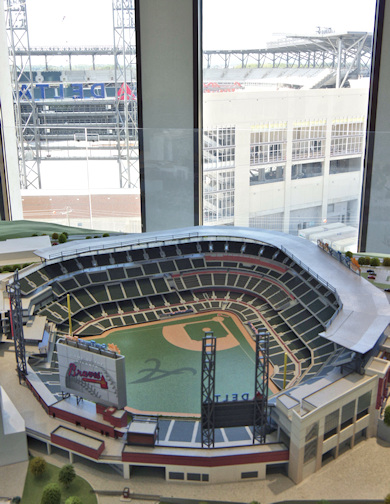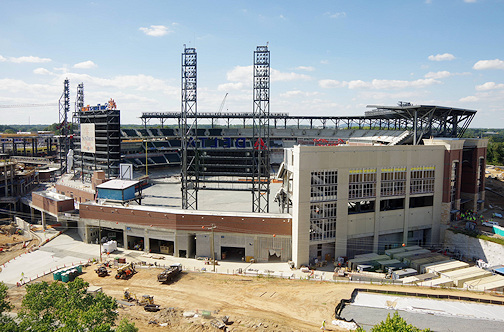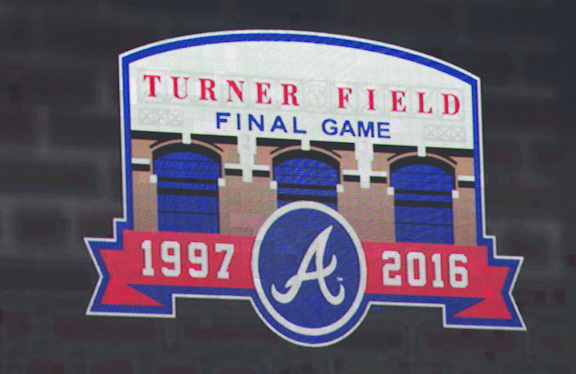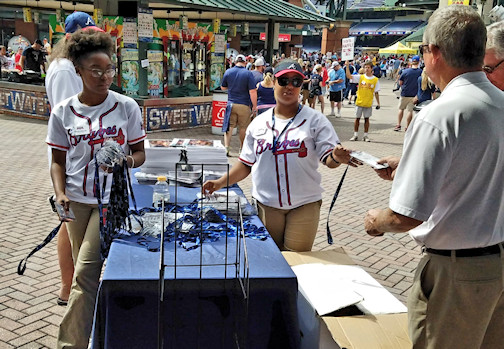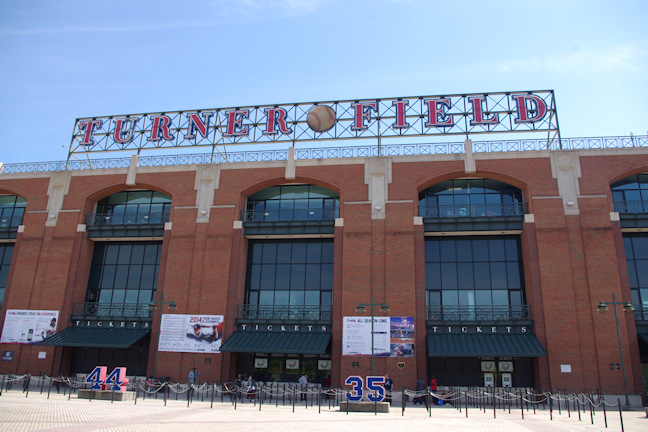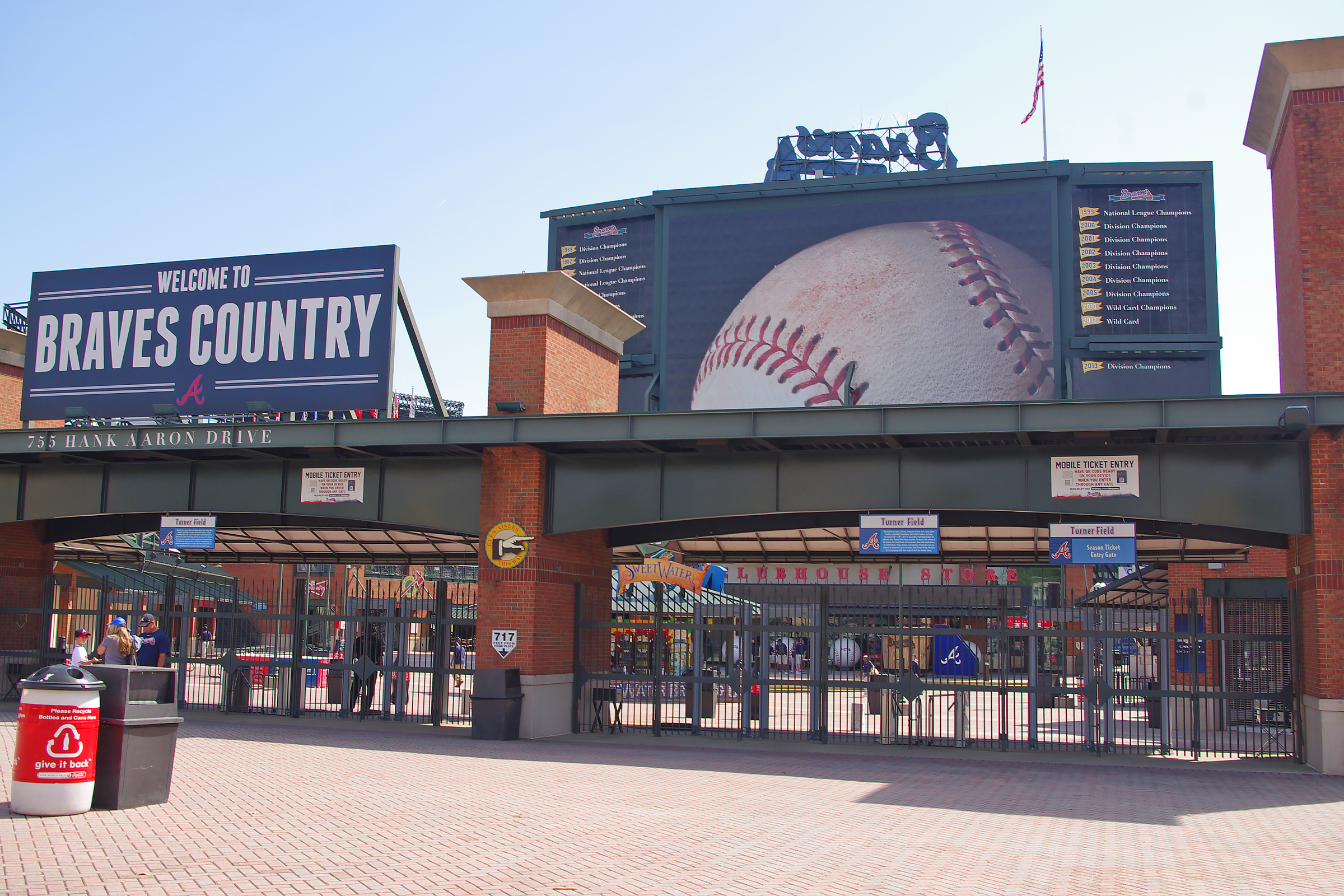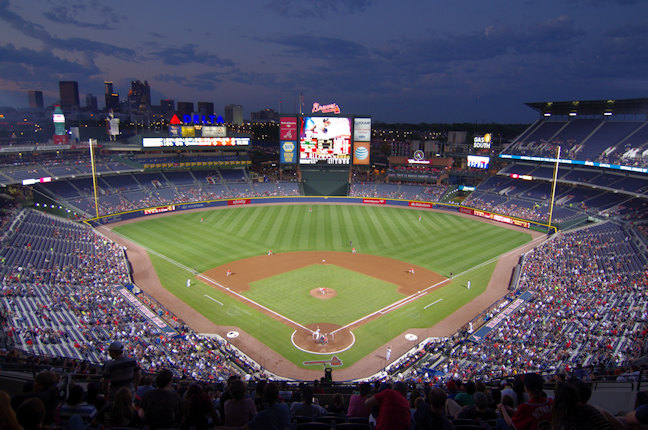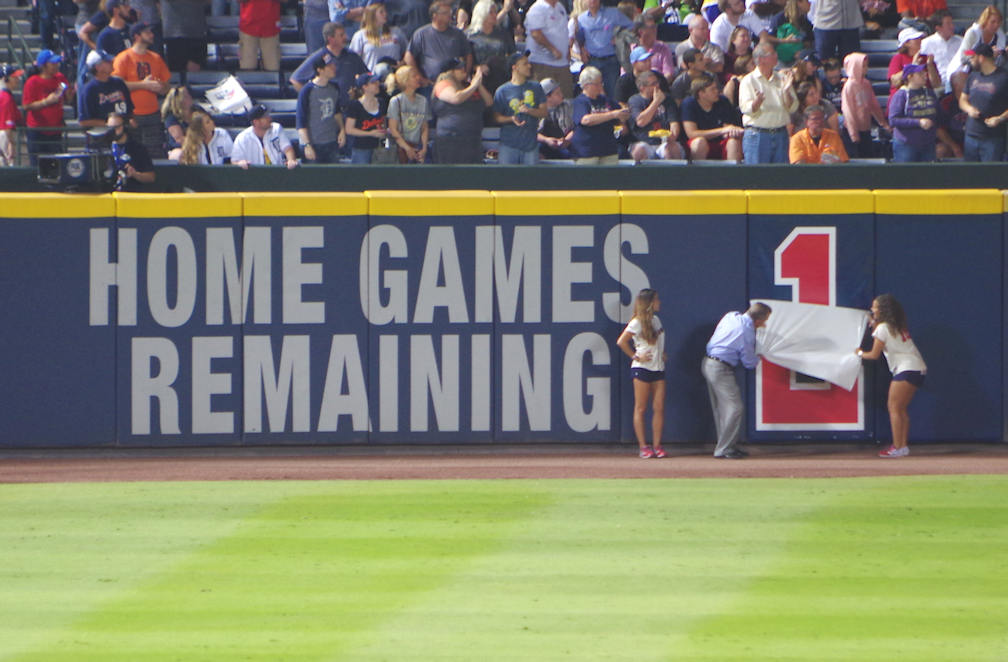While in Atlanta for the final two baseball games at Turner Field (see our photo essay on it here), the Braves graciously agreed to take me on a tour of the construction site for SunTrust Park, which will become their home in 2017. This article and the accompanying photos lets you know what I saw and learned.
Leading the tour was Derek Schiller, President of the Braves’ business operations. Also along was Beth Marshall, Senior Director of Public Relations. The insight provided by the two of them was simply outstanding, because you need to understand the reasons behind the team’s desire for a new facility to appreciate its location and why it was designed the way it was.
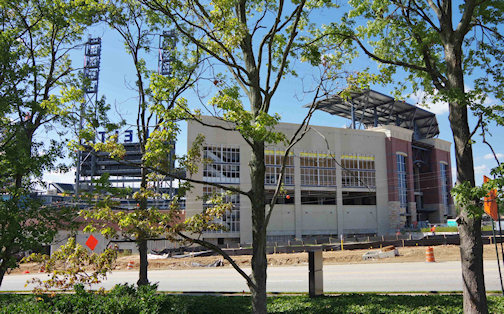
In case you’re not familiar with the new park’s location, it’s a dandy. It’s quite close to the interchange of two of the area’s major highways, I-75 and I-285, in Cobb County, about ten miles north of Atlanta’s downtown.
Prior to the Braves’ acquisition of the parcels of land to make this project possible, this was an oblong piece of largely undeveloped land bounded by Windy Ridge Parkway on the north and Circle 75 Parkway on the east and south. Even though it’s very much in the center of an enormous amount of traffic, it hadn’t been developed partly because major pipelines ran beneath the property. On the south side of Circle 75, though, were several office buildings. The Braves set up a “Preview Center” in one of them. The photo above looks across Circle 75 from the front of that office building. Three years ago, this same scene showed thick trees and a pond.
